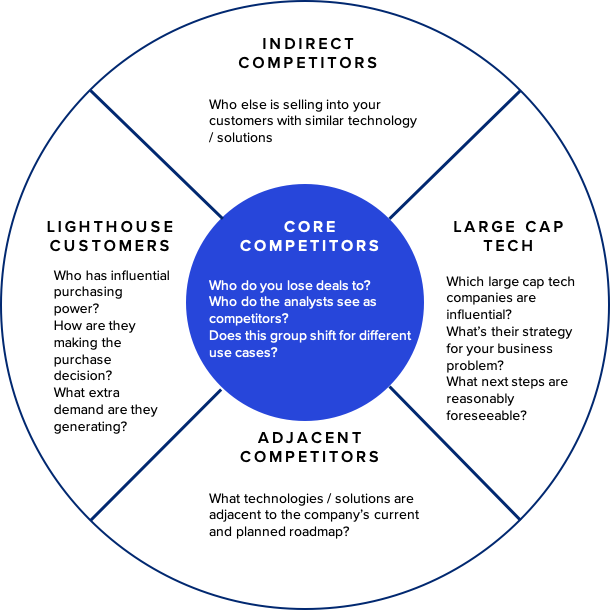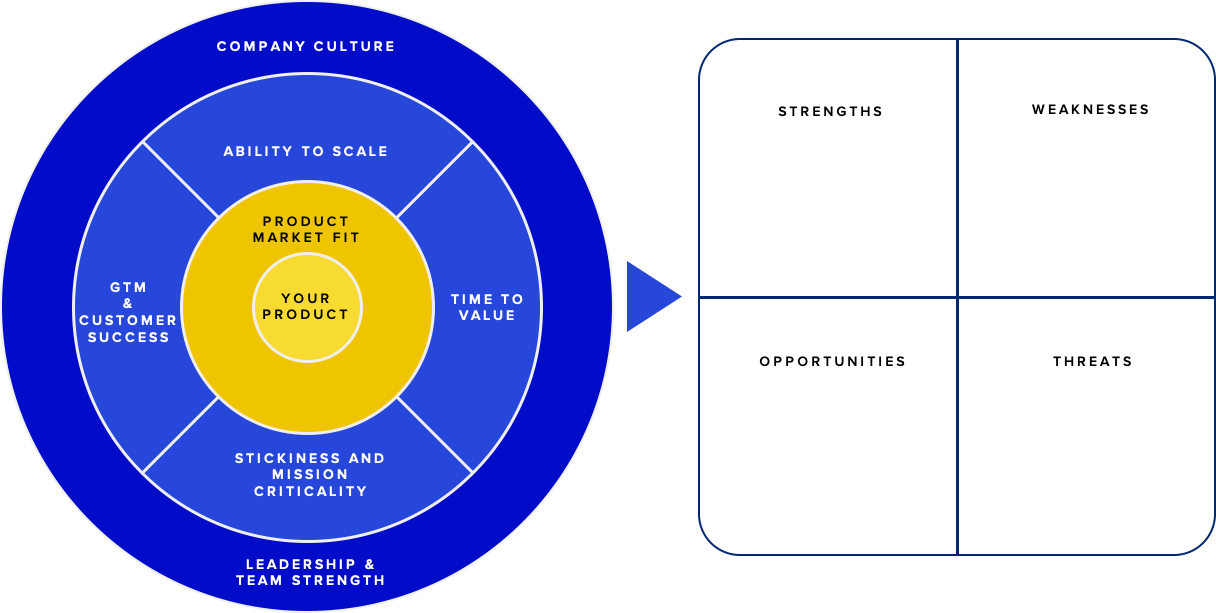
An Executive Framework for Value Creation and Strategic Planning
If you’re building a business, your most fundamental goal is to create value. Having been involved in many M&A transactions over the years, I’ve come to realize that there is a distinct difference between creating value and optimizing for it. In this post, we’re going to share Georgian’s framework for value creation and outline how we help entrepreneurs turn it into an intentional pursuit that can increase your chances of reaching a successful exit.
If you like the framework, we hope you can use and apply it to your own business. The output of this exercise is typically a list of strategic to-do’s that you can prioritize at the leadership level.
Step One: Current and Future State
Before we dive into a value creation exercise with our portfolio companies, we ask CEOs two fundamental questions:
- What does your business look like today?
- What do you want it to look like in the future?
If you start by documenting the current and desired future state, you can use this framework to help us chart the course between the two and ensure that you are creating the maximum amount of value along the way.
Step Two: Map Your Ecosystem
Most companies know who their core competitors are… but what about the wider ecosystem? Do you know who your future competitors are likely to be? Can you clearly identify what’s likely to drive strategy and demand in your space over the coming years? These are the types of questions that you’ll be able to answer by mapping your ecosystem.
This exercise takes all the information you have about your market, customer behaviors and priorities and consolidates it into a single view.
The output shows:
- Who you compete with today
- Who is influencing the strategic direction of your sector
- Who is likely to enter into your space
- What opportunities there may be for future growth in adjacent spaces
- Which key customers set the demand dynamics for your space

A unified picture of your ecosystem gives you three clear benefits:
1. Strengthen your competitive moat and narrative
Knowing where your business sits within the broader market provides helpful context and shines a light on your unique positioning. If you find that your business doesn’t have a well-defined niche, you can use this ecosystem map to help refine your overall narrative and strategic focus. For example, you may uncover enhancements you could make to your product to create a more comprehensive solution. Armed with this new market context and understanding, you can work towards creating a stronger competitive moat around your business.
2. Anticipate market trends
Zooming out to a macro view allows you to picture your space from the customer’s perspective. How does your solution map to the wider problem set they are facing? This perspective will help your team anticipate current and future demand, and the potential for consolidation or expansion in your space. For example, you’ll be able to spot where other businesses could enter your space, consolidate competitors or create a new, more attractive offering. Industry experts, analysts, investment bankers and other advisors who are active in your space can provide helpful market insights to shape this view.
3. Identify value-add relationships
Mapping your ecosystem often leads to a brainstormed list of value-add partnerships (technology or go-to-market based), potential acquisition targets or future exit paths. When considering partners and acquisitions, 1+1 must always equal 3 – more value should be created together than separately. Good partnerships and good acquisition targets will not only advance your penetration in your target customer base but will also bolster your competitive position in the broader ecosystem.
Once you have a clear picture of the opportunities available to you in the broader market, it’s time to look inward and examine your core strengths—we call these value drivers—to see how you can optimize your strategic advantage.
Step Three: Outline Your Value Drivers
Value drivers are the building blocks of value creation in your business. They can be divided into three main groups: core metrics, strategic drivers and premium opportunities.
1. Core metrics
Core financial and business metrics measure the strength and momentum of your company. At Georgian, we encourage our companies to use a metrics framework called the G7, in addition to any metrics that are uniquely indicative of their growth and success. Your core metrics should provide an objective picture of the current state of your business, highlight areas for future improvement, and should be measured regularly to identify trends and changes.
Any future investors, strategic partners or acquirers will measure the strength of your business through these metrics. When sharing them externally, it’s important to consider the audience and have a clear story for each metric – what does it say about your business and why is it a critical measurement?
2. Strategic drivers
As I have evaluated companies for investment and acquisition over the years, I have developed a “buyer’s mindset” and have seen patterns in how buyers and investors think. Once a buyer gets past your core metrics, they will often examine the following elements of your business:

We recommend going through each of the eight sections in the graphic above and answering the following questions:
- Is this a strength, weakness, opportunity or threat?
- How do you measure success right now? What data points do you have?
- Amongst your strengths, what stands out as highly differentiated?
What you’re looking for during this exercise are the elements that make up your company’s secret sauce. If these are the key ingredients of value creation, where do you shine?
By mapping your strategic drivers in this format, you can visualize your strengths to double down on, and weaknesses to address.
3. Premium opportunities
We call high-value growth and expansion opportunities—both the realistic and the moonshots—premium opportunities. These opportunities are the aspirational vision for the future of your business and provide a roadmap for long-term incremental value.
Examples of premium opportunities include:
- Building a proprietary data moat
- Expanding into new markets/geographies
- Enhancing your technology through third-party integrations
- Expansion into adjacent use cases
- Acquisitions
The likelihood that you can achieve these premium opportunities, and the scope and scale of those opportunities, will be directly tied to your organization’s value.
Step Four: Chart the Course and Refine your Narrative
By this point, you should have a comprehensive macro view of your ecosystem, your company’s strengths and weaknesses, and a list of potential action items. While many CEOs and executives have these details in their heads, we often hear that it is a valuable exercise to zoom out and put all of this into a living, breathing document.
What you’ve done, at a high level, is develop a blueprint for the desired evolution of your business. In our experience, the most successful companies use the value creation framework as the foundation for strategic planning and execution, including:
- Developing and measuring strategic business and growth plans
- Positioning for future fundraising
- Corporate development strategies, including partnerships and potential M&A
- Long-term, proactive exit planning
Coming out of a value creation exercise, each key action item should have an assigned owner with milestones and KPIs that are communicated and tracked at the executive and board level. Ideally, you can revisit these frameworks and repeat this process every year to help set the strategy for the next fiscal year, with a cadence of quarterly checkpoints.
Interested in running your own value creation exercise? We run guided workshops through the Georgian CoLab – our pre-investment program for growth-stage companies. Apply today.
Read more like this
Cloud Spend Management: A Guide for Startups
Over the past several months, CoLab executives and customers have told us…
How to Use OKRs to Unlock Your Company’s Potential
You’re probably familiar with OKRs — Objectives and Key Results. OKRs are…
Team Profile: Azin Asgarian, Applied Research Scientist
What do you work on at Georgian? As part of the R&D…